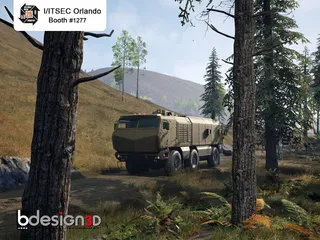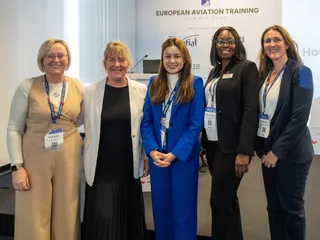Immersive Tech Takes Center Stage at TSIS 2025 as Military Opens Door to Innovation
Contact Our Team
For more information about how Halldale can add value to your marketing and promotional campaigns or to discuss event exhibitor and sponsorship opportunities, contact our team to find out more
The Americas -
holly.foster@halldale.com
Rest of World -
jeremy@halldale.com
.jpg/r%5Bwidth%5D=320/f354d7c0-512c-11f0-8477-719aa0485e49-MS_T-MS-TSIS-3DP%20(1).webp)
Marco Santana represented team Halldale at the NTSA-sponsored and -hosted 17-18 June TSIS. His conference report follows.
US Navy Capt. Robert Betts implored tech industry leaders last week in Orlando to reach out directly as they build and innovate.
The direct request marks a significant departure from the traditional, often rigid processes that have historically burdened businesses attempting to partner with the military.
“If you have ideas, if you have suggestions on better ways to do business, let us know,” said Betts last week in Orlando. “Don’t wait for one of these outreach opportunities. Come find us immediately because now is always a good time to talk.”
Betts assumed command of Naval Air Warfare Center Training Systems Division just last month.
He made his remarks while addressing the annual Training and Simulation Industry Symposium (TSIS).
The two-day symposium with industry focused heavily on emerging technologies like augmented, virtual and extended reality.
Betts’ shift reflects an understanding of the changing global landscape.
The need for immediate, transformative solutions has grown in importance as the pace of change intensifies quickly.
At the same time, cost and logistical challenges of traditional training methods has also risen.
Because of this, emerging tech has moved beyond being mere buzzwords to become a strategic initiative alongside artificial intelligence in training.
Its adoption is driven by the imperative to deliver highly efficient, impactful training.
“We are allowing the next generation Warfighter to practice war while saving what’s really important right now, our tax dollars, along the way,” said Lt. Col. Jim Cooper, director of business development for Design Interactive.
This efficiency is further amplified by a crucial shift in training philosophy, which moves away from traditional, one-size-fits-all approaches towards personalized learning.
This transformation benefits greatly from the rapid infusion of artificial intelligence, enabling training modules to dynamically increase or decrease difficulty based on the individual's performance and needs.
Cooper said that the natural next step involves generative AI empowering personnel to create their own highly specific content and scenarios.
“You can now have a simulation adapt to personalized training,” he said. “If I’m not so skilled at the beginning, we could slowly increase my training and see how my decision-making skills (improve).”
This personalized approach offers significant efficiency, ensuring that time isn't spent teaching lessons half the room already knows.
Instead, training can focus precisely on individual needs, maximizing every minute.
However, the implementation of these transformative technologies does not come without its challenges.
For a complex system and industry like the military and defense, a critical hurdle is establishing interoperability across diverse platforms and systems, said Darin Hughes, lead software engineer at SIMETRI.
“We should be able to pass these simulations off to each other,” he said. “We really haven't come together on a common communication protocol."
Overcoming this will be key to unlocking seamless, multi-player scenarios and unified data collection that enhance overall readiness.
Despite these integration complexities, the immersion level the military can achieve with these technologies will only continue to increase as more sophisticated solutions become commonplace.
The adoption of these immersive technologies – and the robust amount of data that comes with them – offers dramatic advantages to traditional training methods.
Through highly detailed and immersive environments made possible by the latest tech, warfighters can safely experience a version of practically any scenario, from complex tactical maneuvers to critical medical interventions.
There is also the possibility of real-time testing of skills learned with immediate feedback that had been previously unavailable.
These innovations ultimately enhance cost-effectiveness and enhanced readiness, meaning more training with less wear-and-tear on expensive equipment.
It’s a situation Serious Simulations CEO Christopher Chambers said he envisioned years ago.
He built his Orlando-based company around the early promise of augmented and virtual reality.
However, the slow pace of adoption in the military proved daunting so he switched his focus to hardware and live training.


